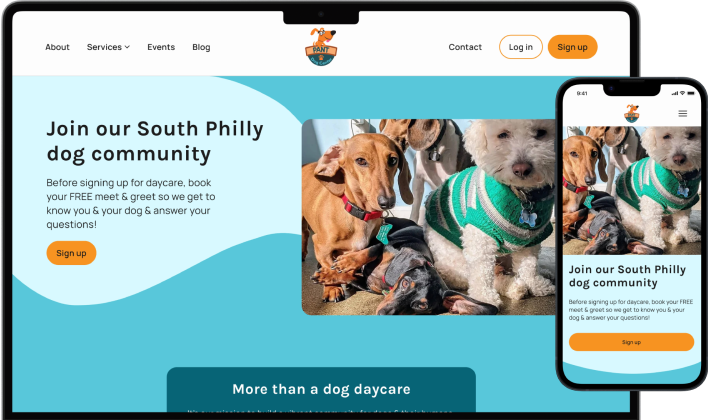Bringing peace of mind about online orders with a calendar
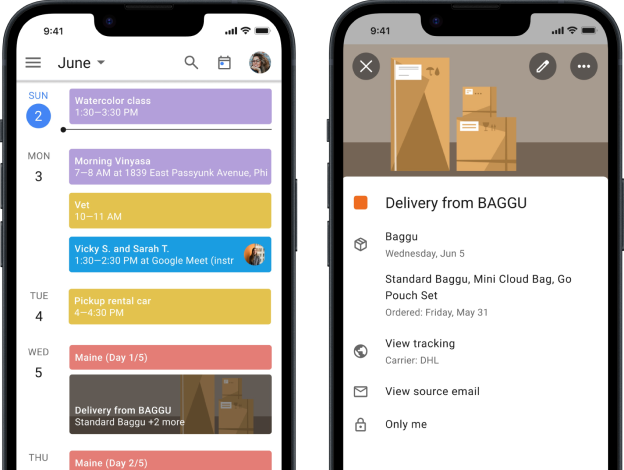
Everyone wants to know: what’s my order’s status?
People can’t rely on ordering something online then having it end up in their hands. There are so many variables from processing, shipment, to delivery that can result in your order being delayed, lost, or delivered to the wrong place. You need to check, remember, and be on top of order updates to know that everything’s going as expected.
I wanted to explore how Google Calendar can help users with order tracking. Google Calendar already has a smart feature that automatically adds events from your Gmail (ex: flights, restaurant reservations, concerts) to your calendar. I was curious how a new feature could build on that.
| Role | UX Designer, UX Researcher |
|---|---|
| Scope | New feature (Student project) |
| Tools | Figma, Miro, Maze, Airtable |
| Timeline | 60 hours |
Exploring online calendars & order tracking
Research Plan
Focusing on a (user-centric) goal
Before jumping to ideas about what this feature would look like, I needed to first investigate the problem users were having and what existing apps were already doing.
Research goal
I want to understand people’s behaviors, pain points, and needs in tracking online orders to create Google Calendar events and tasks that help users in tracking and managing orders.
How are other apps doing with syncing?
I did a competitor analysis to uncover what exists in the market with online calendars and order tracking. I was especially curious with how apps deliver on the promise of accurate, real-time information since there are likely technical and/or legal constraints around that.
The competitors

Apple
Apple’s a competitor because of their calendar app and because they also offer an ecosystem of products like Google.
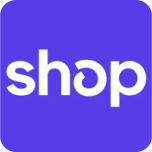
Shop
Shopify is dominating the e-commerce world with its website builder and also has an app that offers package tracking.
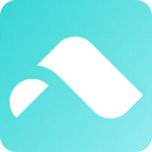
Route
Route simply offers tracking for many retailers and carriers and isn’t tied to a specific platform or product.
Findings
- All apps offer some level of email synchronization. Shop and Route also sync with Amazon.
- Order or event information is hidden in some views. With Shop and Route, the order status isn’t always real-time or accurate.
- All apps have some limitations in where and how the app can be used in terms of location, platform, or device.
- Route doesn’t allow users to customize names of packages, which I saw as an opportunity: allow users the option to edit and manage auto-created events.
How do users think, manage, & organize?
I conducted five 30-45 minute interviews via Zoom to understand what people do with their calendars and online order tracking, what was challenging, and what was important to them.
The participants
My participant criteria was anyone who both shops online and uses an online calendar.
It wasn’t necessary that participants use Google Calendar since my questions were not specific to Google. Regardless of which calendar they used, I wanted to know people’s behaviors, motivations, likes, and dislikes with their calendar.
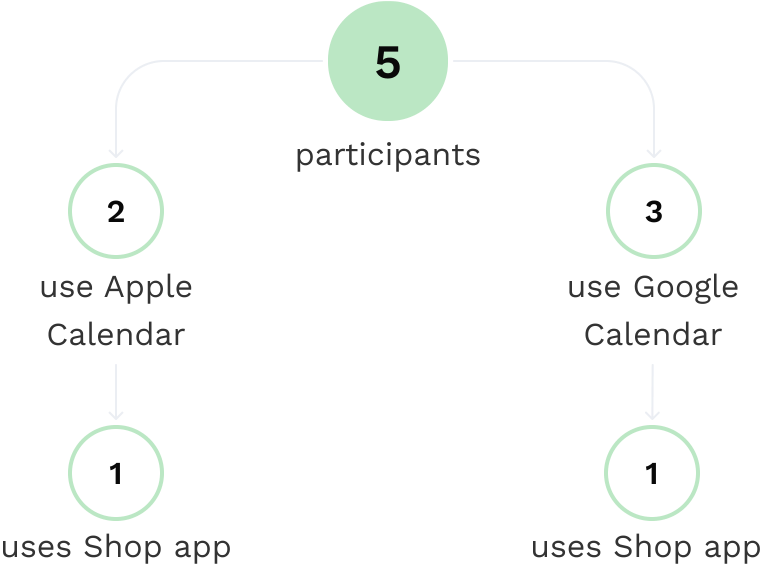
Peeling back the onion layers (of calendar users)
Interview insights
The outer layer: what people say
Calendar apps are important to people to remind them what’s going on, plan what to do, and to coordinate with others through shared events and calendars. The more it can do for them, the better, including smart features like suggestions or adding events.
“I check my calendar daily to see what’s going on that day.”
“I forget to add things so I like when my calendar does it.”
“I want to do as little work as possible with my calendar.”
When it comes to online orders, from the moment it’s ordered, shipped, delivered, and returned, people want to know what’s happening when and to easily access and view information. It’s frustrating when information is unclear, inaccurate, unavailable, or hard to find.
The inner layer: what people do
Nobody said it was difficult to keep track of orders because they had their own systems in place to stay on top of it, which include:
- Label order emails ‘purchase’ or ‘shipping’
- Check apps like eBay, Shop, and Amazon
- Keep a Google Doc of orders sorted by delivery
- Leave emails unread until order’s delivered
- Subscribe to text notifications from carriers
- Check email often
The core: what people need
I wondered if there was even a problem to be solved since there wasn’t an expressed need around order tracking. If there was, people seemed to have solved it themselves.
However, when talking about organization, people said they have to pick and choose areas to stay organized in, whether it’s work vs. personal life or digital organization vs. your physical space.
Hidden need
People said it’s difficult to stay organized in all aspects of life all of the time. They didn’t see how their order tracking systems added to feeling overwhelmed by organization since it was a part of their day-to-day life.
“I’m good at organization in some areas and not so much with others”
“I’m very organized with work but outside of that, it’s organized chaos.”
“I can start off organized but struggle to stay organized over time.”
Scraps to toss
On the other hand, it was immediately clear that a calendar serving as a to do list is not what people want or need.
I tossed the idea of automated tasks not only because people said they didn’t want it but because I understood what was important to users with their calendars. People want calendars to tell them what’s happening, not what to do.
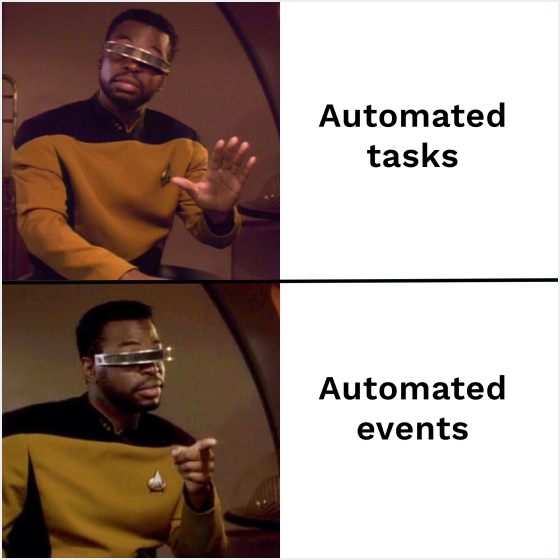
Framing the bigger picture
Research synthesis
Connecting the dots
I uncovered the core problem when I found a point of friction between what users say about organization and what they do to be organized about orders.
The problem
Online shoppers create organization systems to stay on top of an order’s status but it’s hard to be organized all the time.
Personas: filling in the details
Beyond just knowing users shop online, use a calendar app, and share the problem above, I wanted to clearly define who they are as people and what they want, find frustrating, and need.
The Easygoing Planner
My primary persona is Vicky. She sees herself as someone who struggles to remember things and always has a lingering feeling that she’s not doing enough to be organized.
It frustrates her when it’s a scavenger hunt to find order information and a store doesn’t provide regular updates. She wants to put minimal effort in tracking her orders so she can focus on her creative hobbies and social life.
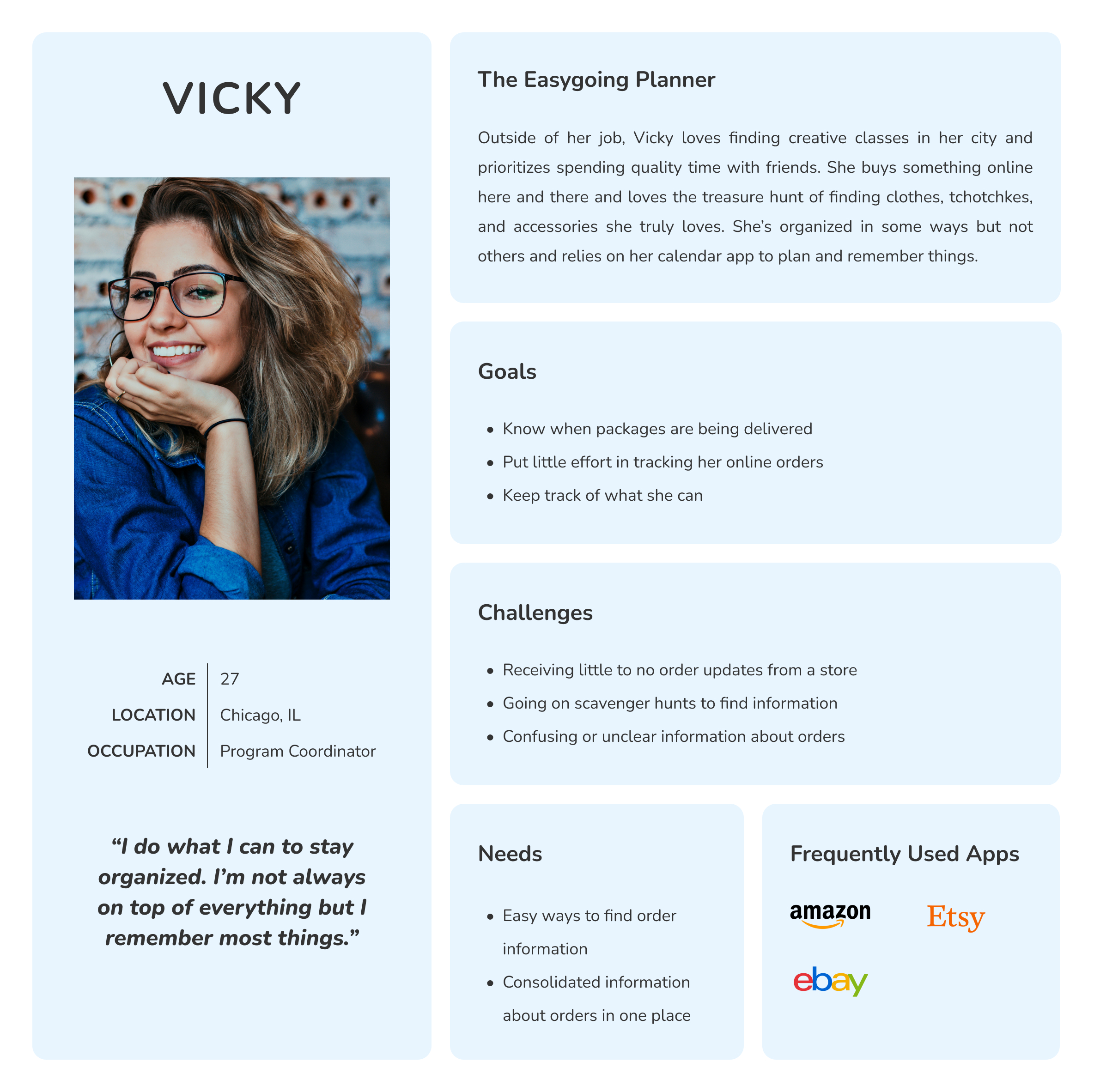
The Ultimate Organizer
My secondary persona is Angela. She prides herself on her organization skills in her work and personal life. Organization brings her a sense of calm since she knows what to expect.
She needs to know when packages are arriving to plan around it, but she has to cross-check information in multiple emails, apps, and texts. She wants to spend less time doing this so her time can be used more efficiently elsewhere.
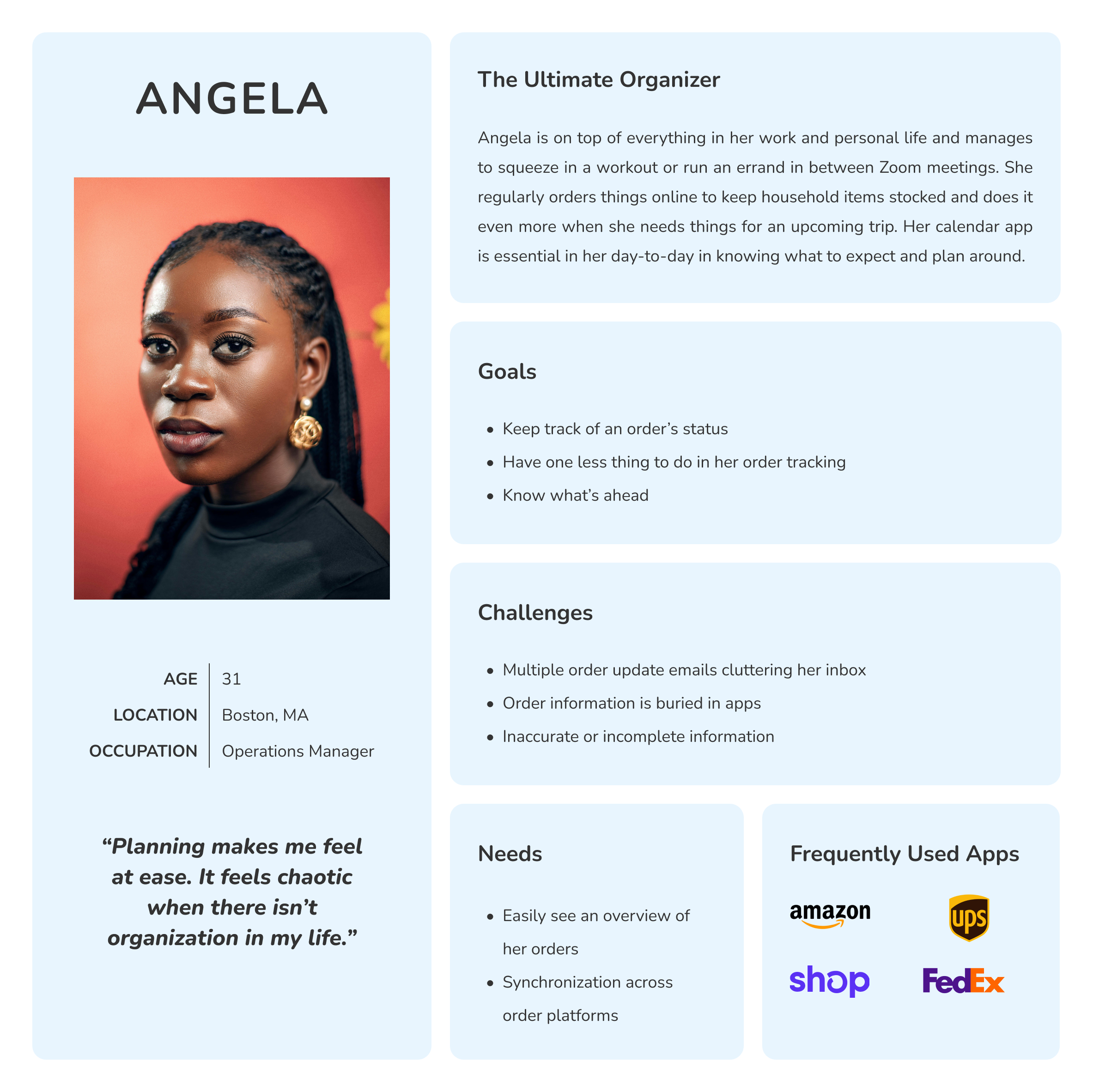
Reframing the problem
With a clear problem and a clear picture of who my users are, I needed to find a solution to answer this question.
The question
How might we help online shoppers easily track their order’s status so they aren’t pressured to always be organized?
Making it easy to know about deliveries
The solution
Automatically add deliveries to calendar
Throughout the span of when an order’s placed, shipped, delivered, or returned, deliveries are the events people need to know the exact date of so they can plan to be home, coordinate with a neighbor if they won’t, or just know when it’s happening.
The solution
Build on Google Calendar’s smart feature and automatically add deliveries to a user’s calendar from their email.
Why it works
- There is no scavenger hunt through emails for order information.
- It keeps all key pieces of order information centralized in one place.
- The delivery date will update along with new order-related emails.
Mapping what users will do
People view, edit, or add events in their calendar and also coordinate with others through sharing events or calendars. I mapped out how people will perform similar actions with this new feature.
Edit event
Thinking back to my competitor analysis, it was important that a smart feature didn’t take away a user’s ability to edit an event.

Add event
Along the same lines, users have the option to create these events themselves using a source email. (Google Calendar calls the email that automatically creates the event as the source email.)

Share event
They’ll also be able to share the delivery event with other people.

What do I change, rework, or create?
For my low-fidelity wireframes, I thought through what was needed for each task flow and organized what I needed to do into the following two categories.
Change/rework
These are screens that already exist in Google Calendar that I need to change or rework for this feature.
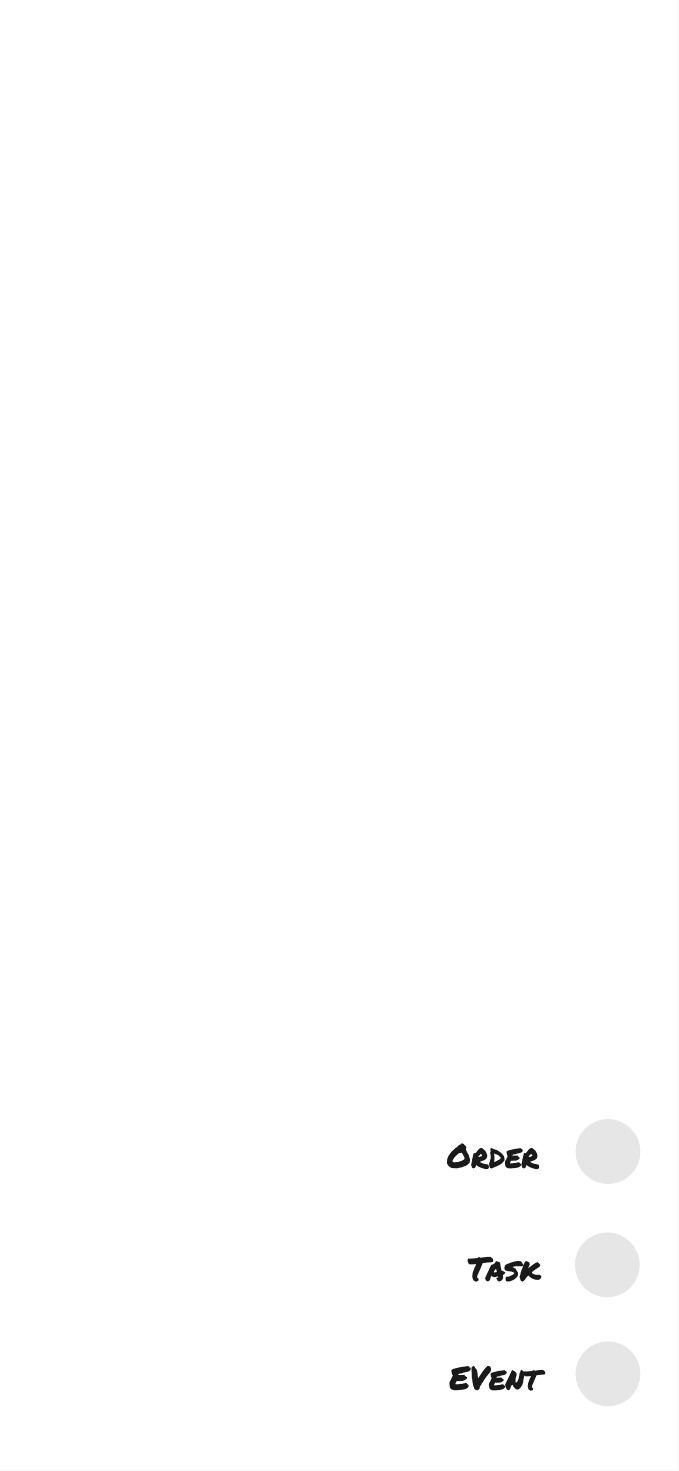
Add event
When adding to a calendar, I included a new option: ‘order.’
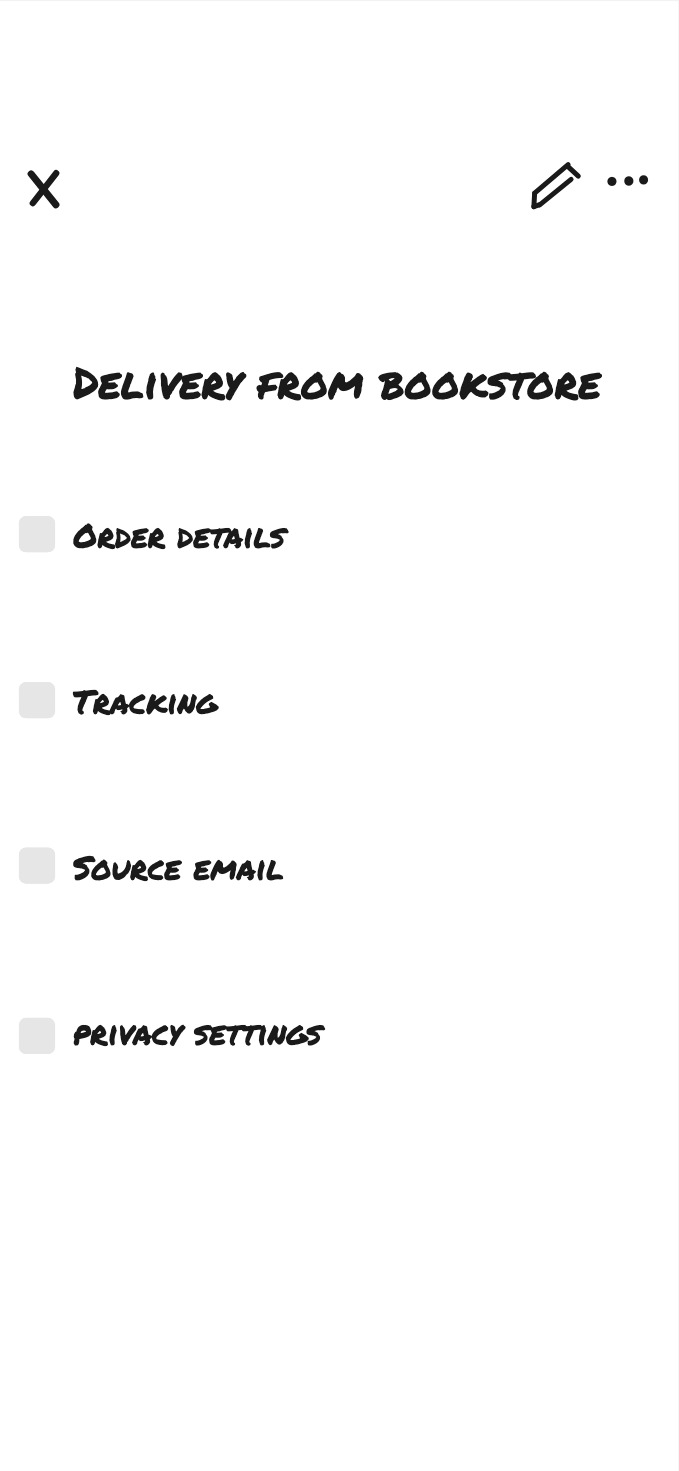
Event details
I reimagined event details for an order event.
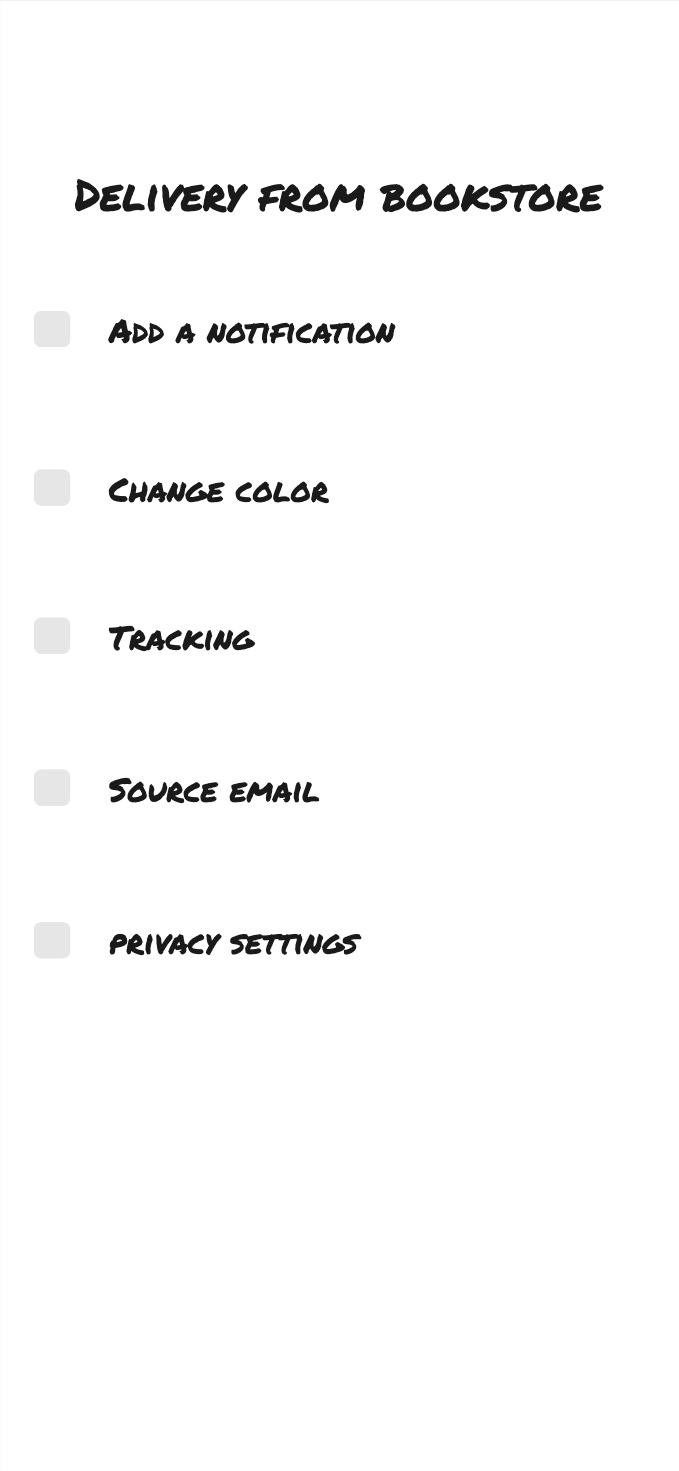
Edit event
I included new fields to edit for an order event.
Create
These are screens that do not exist that I need to create.
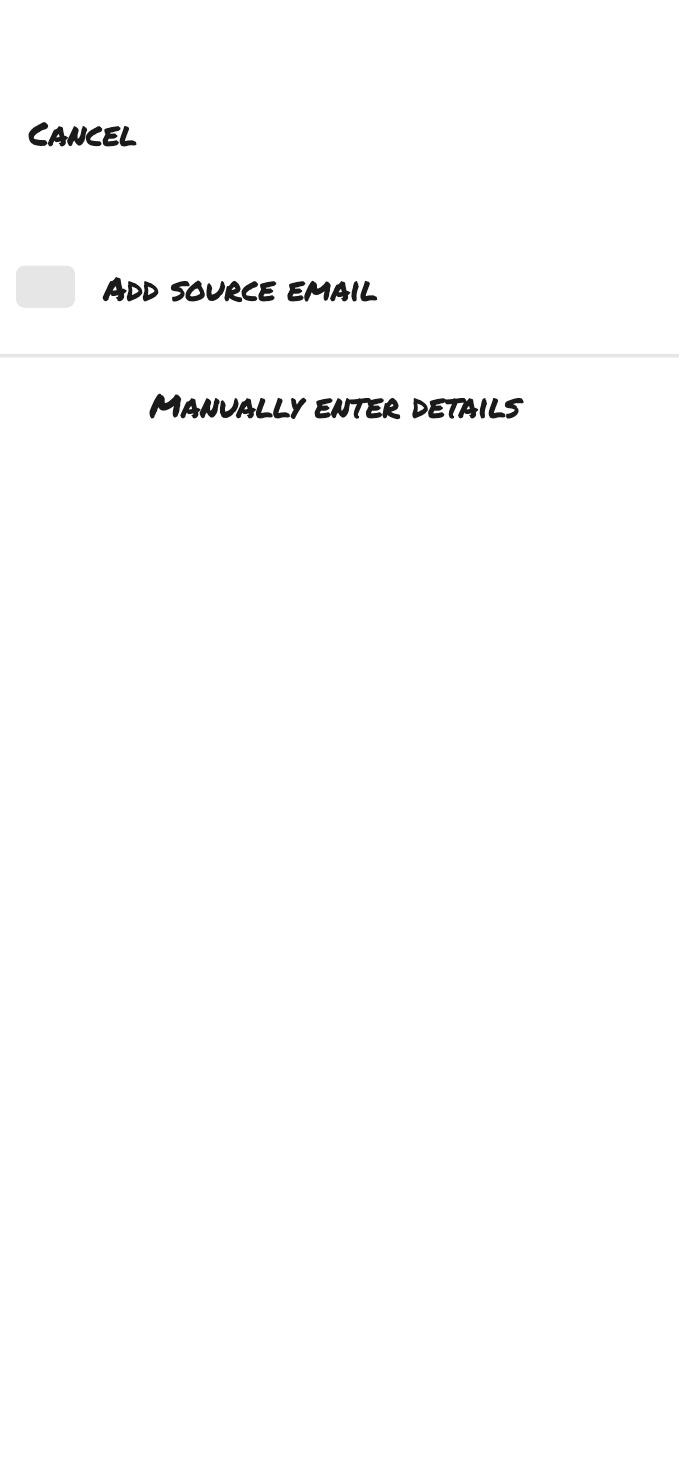
Source email
This is for users to choose how to fill in details for a new event.
Edit tracking
This is what users will see when they edit an event’s tracking.
Design, test, revise, repeat
Design
Putting designs to the test
For my mid-fidelity wireframes, I spent some time poking around in Google Calendar, Maps, Drive, and Gmail to study Google’s icon, layouts, and hierarchy. Then, I conducted a usability test for my 3 task flows: edit, add, and share an event.
Who, how, & why
My usability test was unmoderated via Maze with 5 participants. Unlike my open criteria with user interviews, test participants needed to use Google Calendar.
I wanted to know:
- Does this match users’ expectations?
- How clear are labels and actions?
- Does it look like Google Calendar?
Findings & revisions
I discovered these key insights and made the following changes for my high-fidelity wireframes.
Don’t make people guess
Always be clear in what labels mean and what actions a user can or can’t do so users are confident and certain in their decisions.
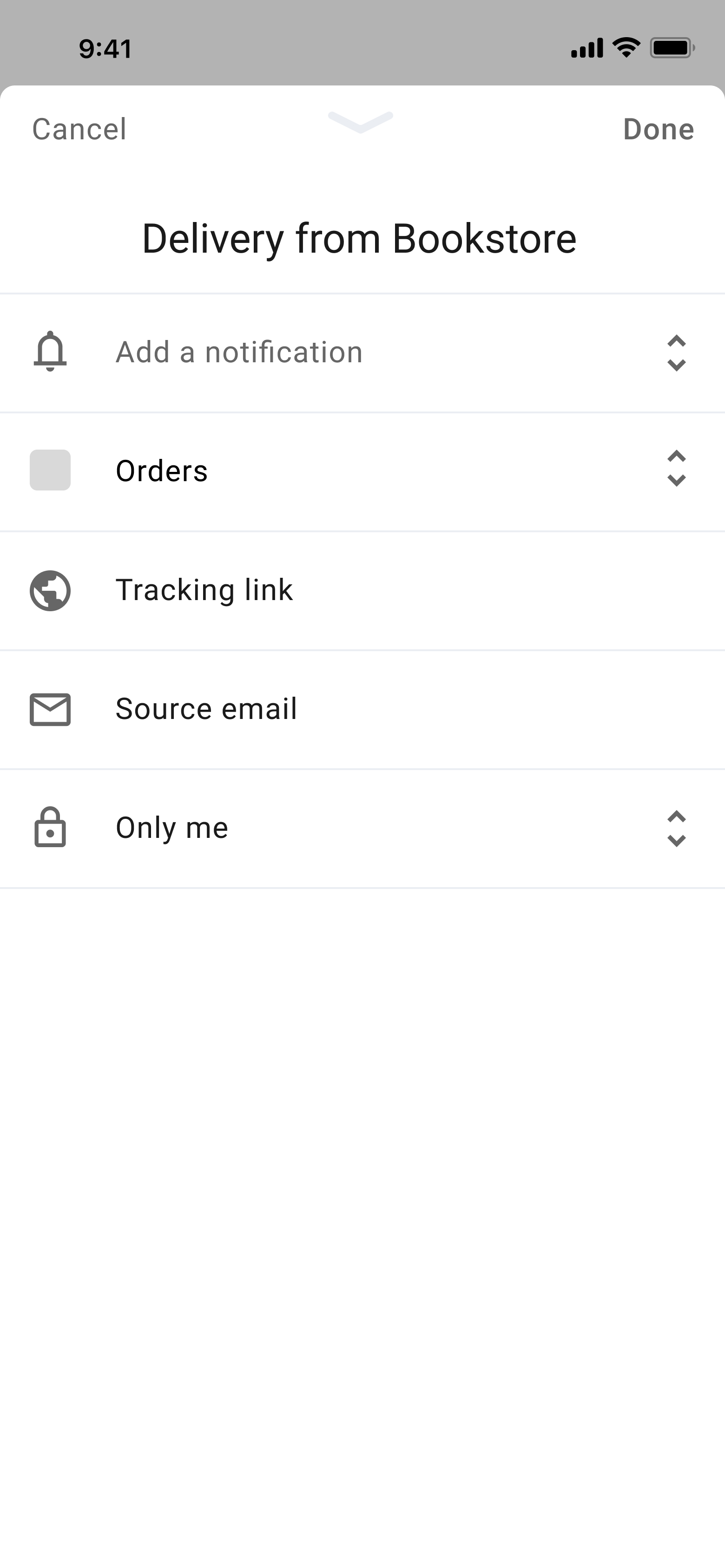
mid-fidelity
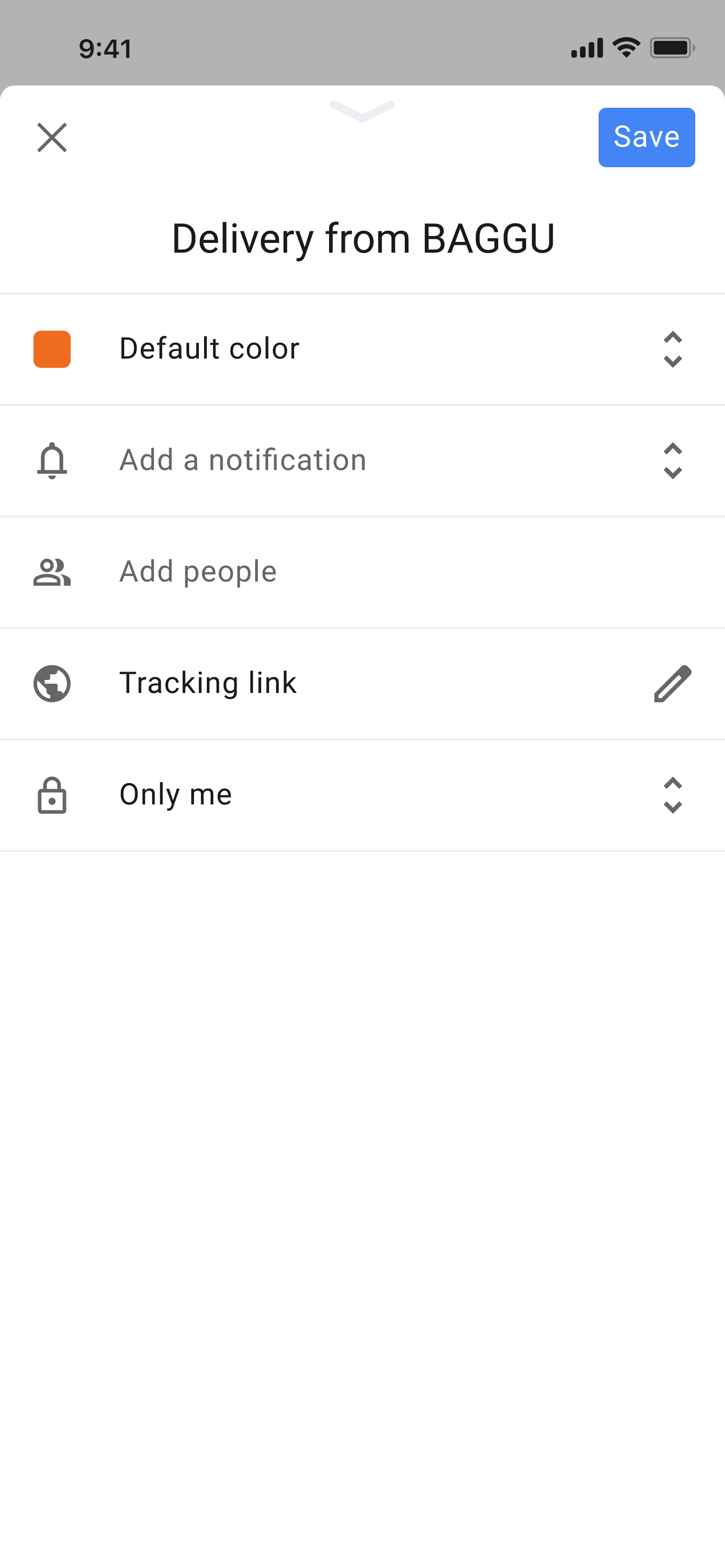
high-fidelity
I added an edit icon to the tracking link field so it’s clear it can be edited. I also removed the option to change the source email since if you need a new source email, you need a new event.
Match design patterns too, not just branding
Think beyond what just looks like the product (ex: font, icons, sizing, etc.) and think about what feels like the product too.
mid-fidelity
high-fidelity
My initial approach when designing this screen was to think about what a user wants to see/do then fit Google’s UI into that. However, I needed to also think about how to make my design consistent with Google’s flow and interactions.
I went back to looking at Google apps to understand their UX, not just their UI. Google is very minimal in how they present actions to a user, so I pared down the screen to this version.
Think outside of what exists
Don’t limit solutions and ideas to what currently exists either.
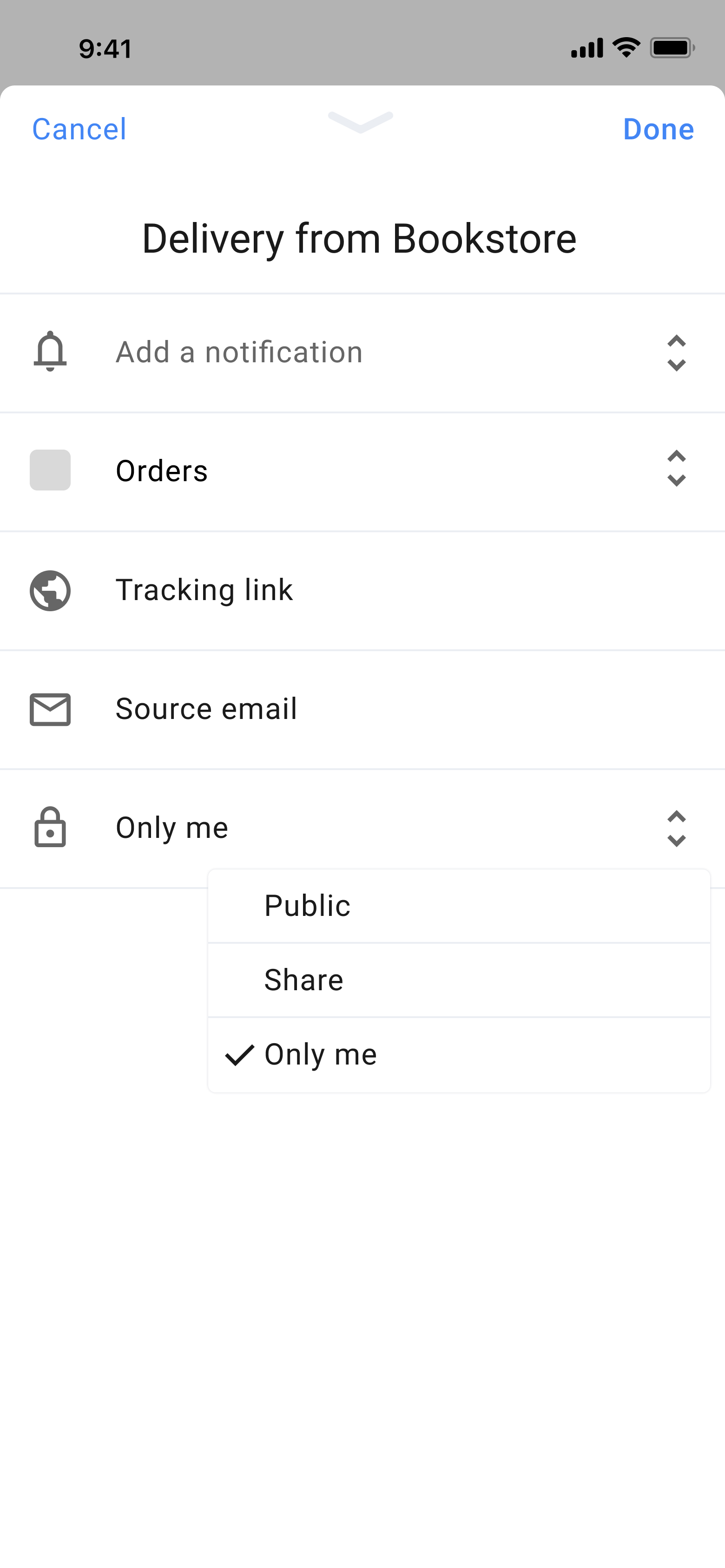
mid-fidelity
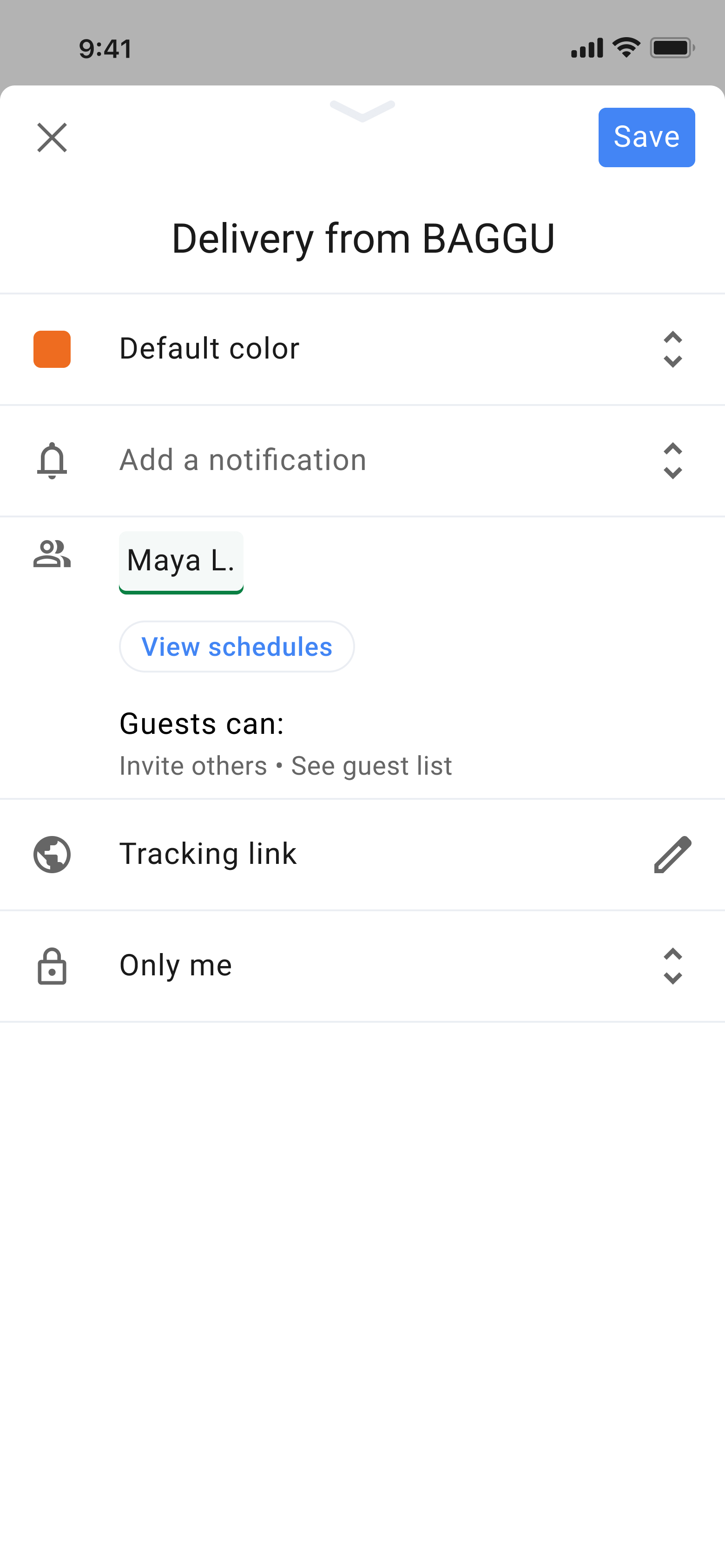
high-fidelity
Currently, with Google Calendar’s smart personalization, you can only share those events by changing the privacy from private to public. I limited my ideas to this and created a new ‘share’ option under privacy settings, which wasn’t intuitive to testers.
I should’ve been open and thought of the event as it was—an event. How do you share an event? By inviting someone to it. I redesigned this screen and flow so users can instead add people.
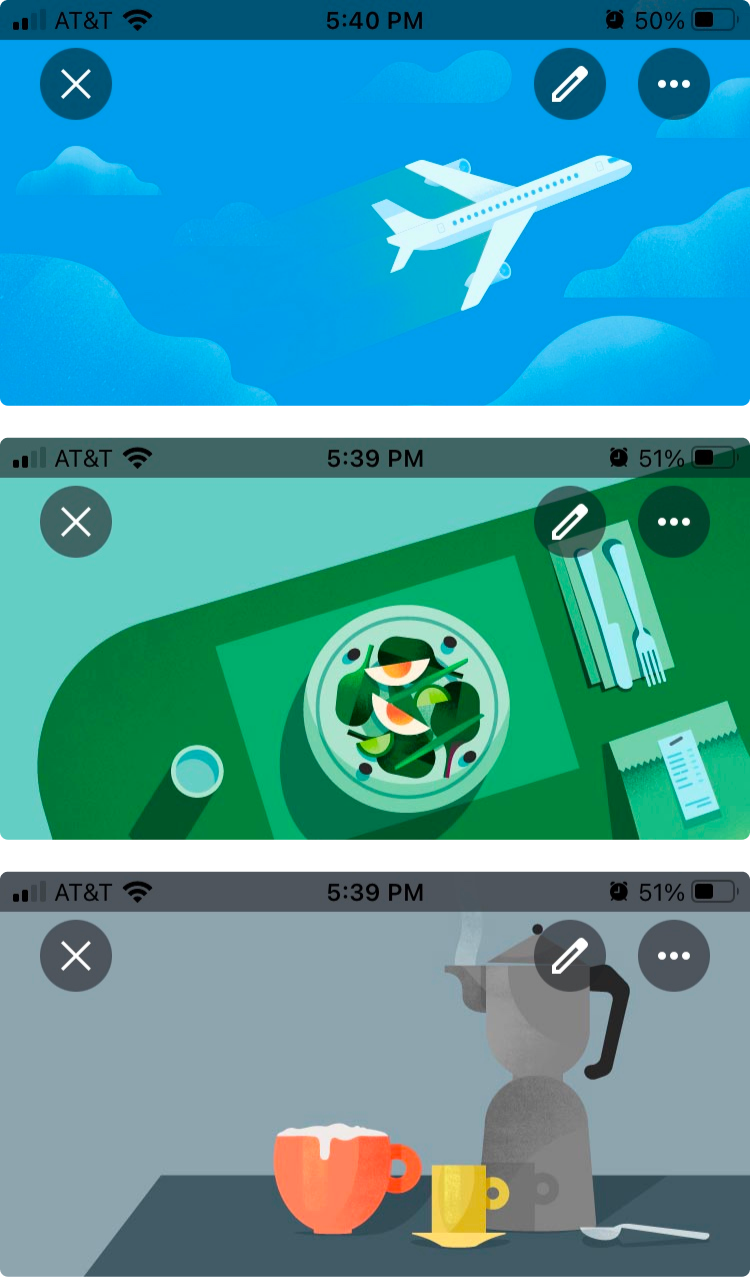
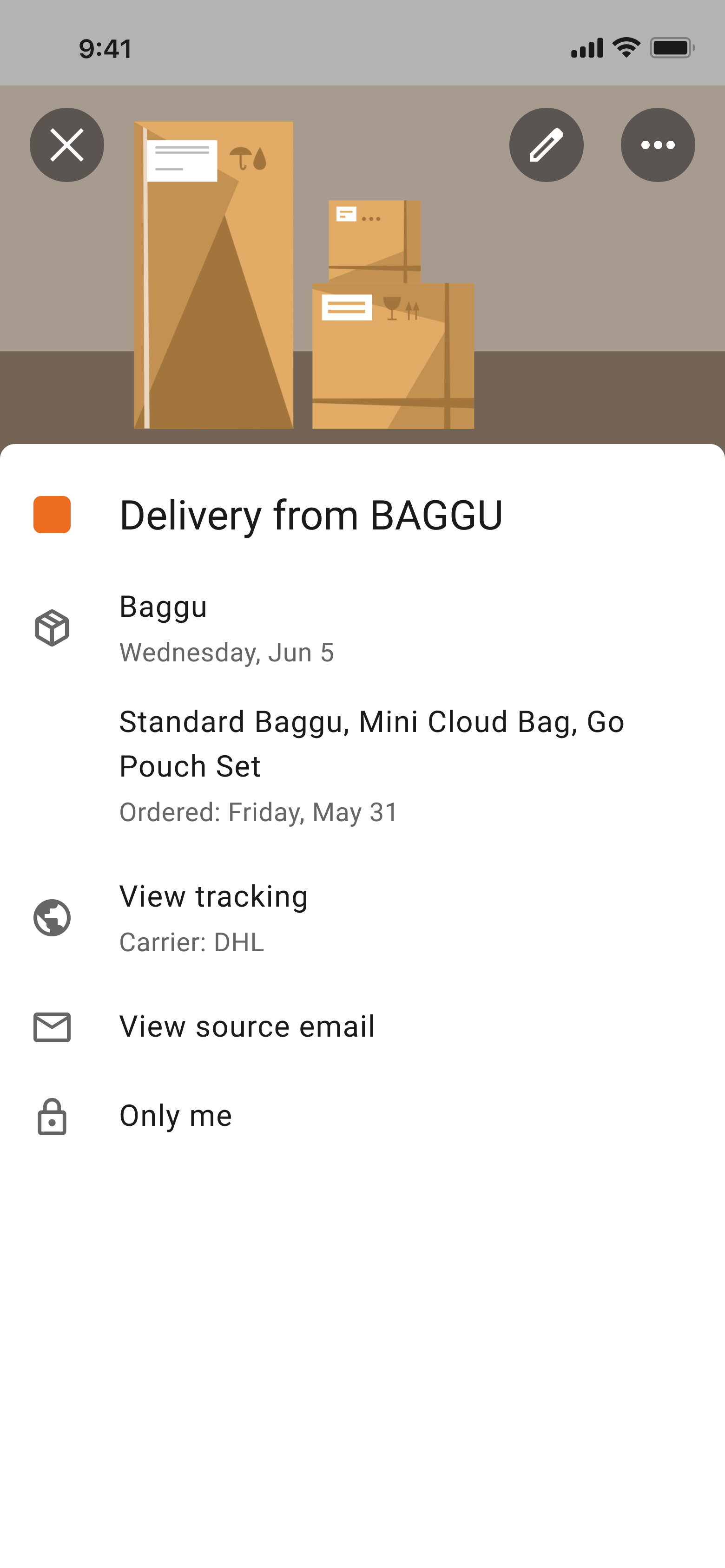
I need a hero
One part of the design process I enjoyed was creating a hero image for order events. I looked at the style of Google Calendar’s hero images and their color palette then created my own.
Test & revise (again)
I conducted another usability test with the same format and participant criteria for my high-fidelity wireframes. I had another set of 5 participants and with this insight, I made final revisions.
Triple check the little things
Be intentional about everything down to the small details like labels.

Before
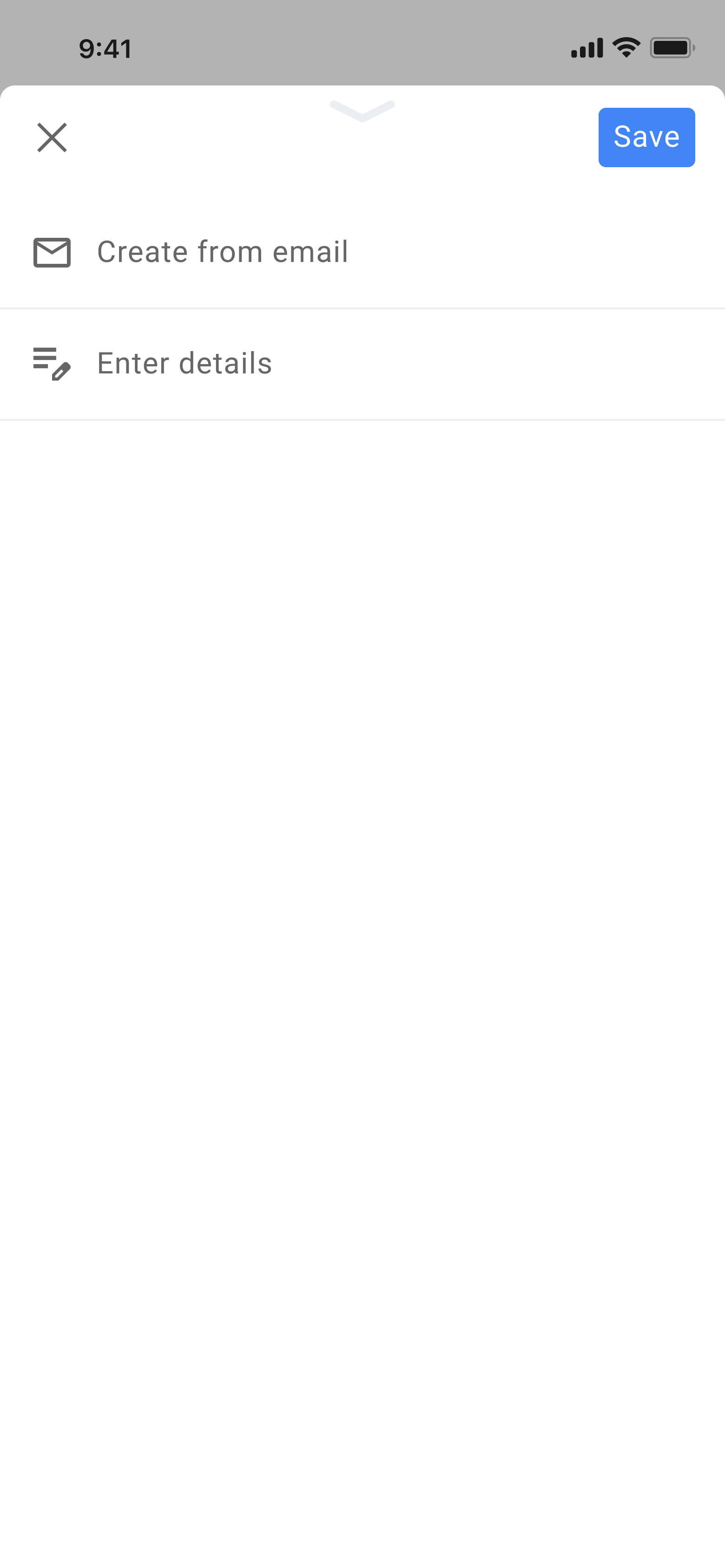
After
Keeping in mind how Google is very minimal in their labels and actions, I revisited the labels here to be more concise and less technical.
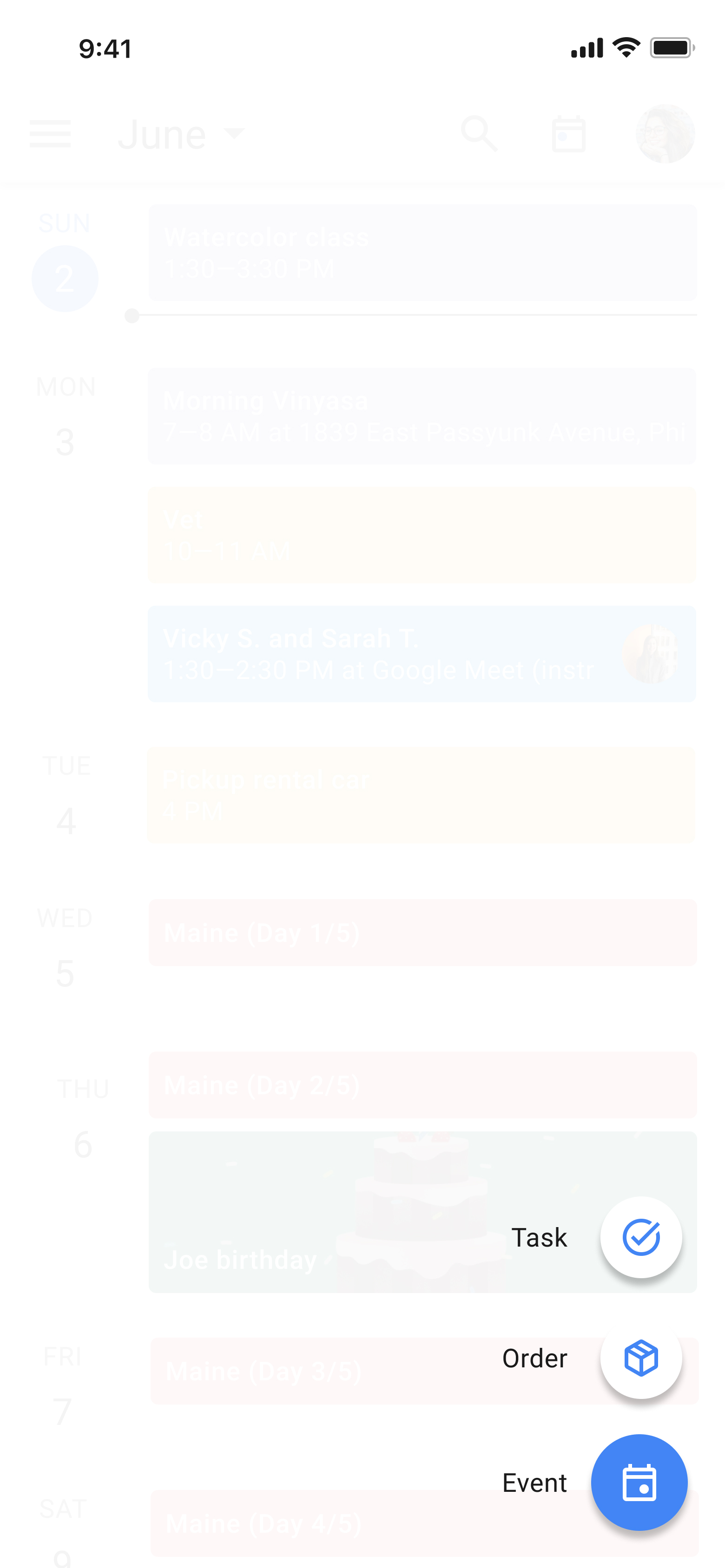
Before
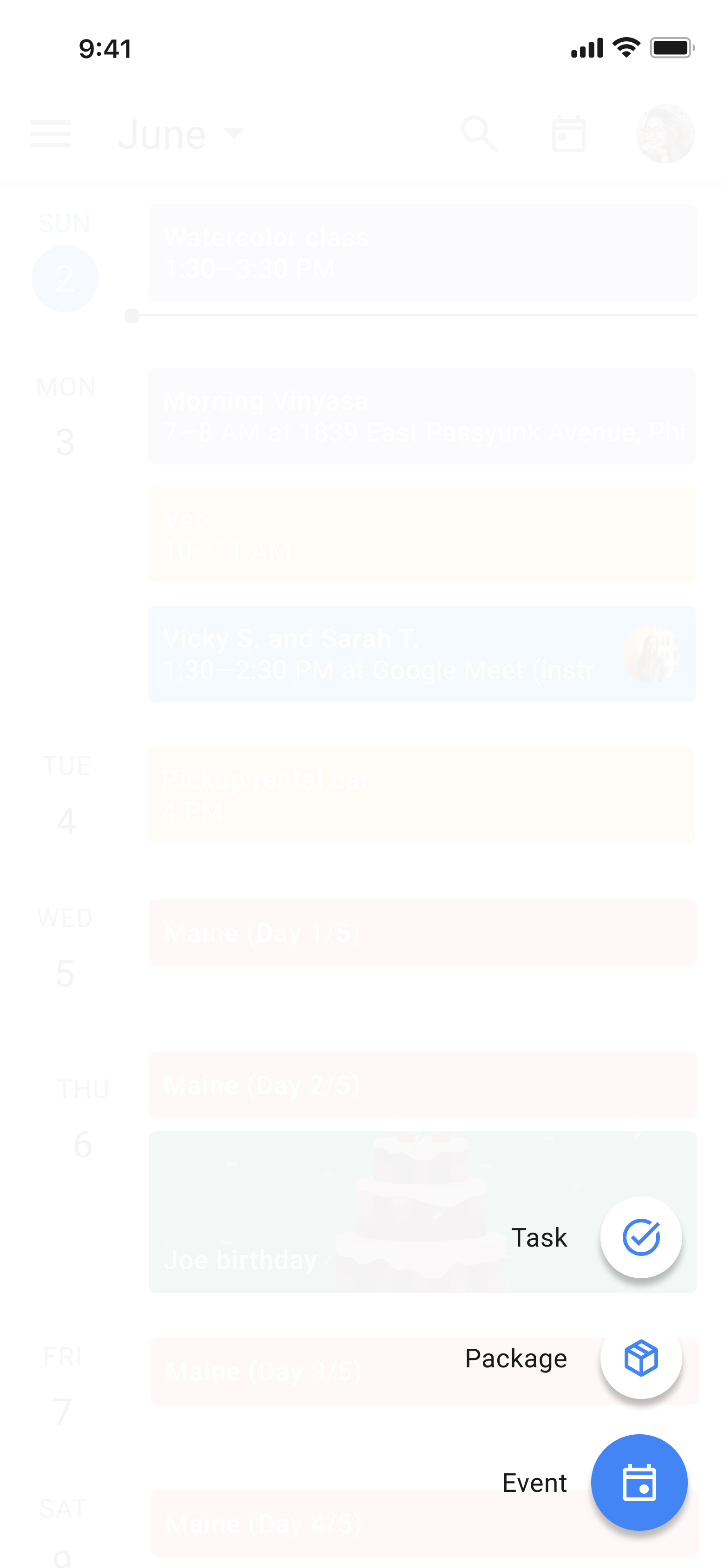
After
Gmail has a feature called ‘package tracking’, so I changed the label to ‘package’ to be consistent with Google’s language across apps.
The final result
Prototype
See it in action
Here’s the big reveal in how this new Google Calendar feature detects delivery dates from a user’s Gmail and automatically adds them to a user’s calendar.
This removes the pressure for users to constantly check, organize, and sort through emails, apps, and texts to stay on top of a delivery date while keeping the flexibility they need with managing events and their calendar.
Edit
Update a package event’s tracking link since the carrier changed to USPS.
Add
Create a new package event using an email from Baggu that was missed.
Share
Share a package event with Maya by adding them to the event.
Try prototype
Go to FigmaLearnings
Along with technical skills I’ve learned with this project, here are some reflections on what I’ve learned as a UX Designer.
Look for patterns & also contradictions
I discovered a user problem when I stopped looking for an obvious pattern and started looking at contradictions. I learned to go deep with findings and find where things connect and disconnect.
Know constraints, but don’t limit ideas
I limited ideas for one of my task flows to what currently exists but found a solution once I let myself explore outside of that. I learned to be aware of when I’m boxing myself in at times when I should be open.
Every little thing matters
My final revisions were just changing labels but it made it more consistent with Google Calendar. Every little thing is part of a design system, product, and brand and should be intentional.
